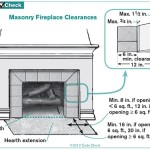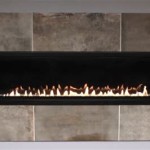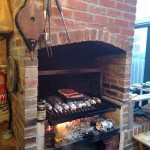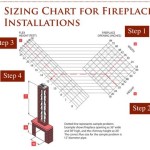Cost to Clean a Fireplace: A Comprehensive Overview
Maintaining a fireplace is crucial for its safe and efficient operation. Regular cleaning prevents the buildup of creosote, a flammable byproduct of burning wood, which can lead to dangerous chimney fires. This article explores the various factors influencing the cost to clean a fireplace, providing a comprehensive understanding of the pricing structure and services involved.
The cost to clean a fireplace can vary significantly depending on several elements, including the type of fireplace, the level of creosote accumulation, the accessibility of the chimney, and the geographic location of the service provider. A basic cleaning generally involves removing soot, ash, and creosote from the firebox, smoke chamber, and chimney flue. More extensive cleaning may include inspecting the chimney structure, repairing minor damages, and addressing potential safety hazards.
Factors Influencing Fireplace Cleaning Costs
Several key factors contribute to the overall cost of cleaning a fireplace. Understanding these elements allows homeowners to anticipate potential expenses and make informed decisions when selecting a cleaning service.
Type of Fireplace: The type of fireplace significantly affects the cleaning cost. Wood-burning fireplaces typically require more frequent and thorough cleaning than gas fireplaces due to the higher levels of creosote produced. Gas fireplaces, while cleaner, still accumulate soot and debris that can impede their efficiency and safety. Electric fireplaces generally require minimal cleaning, primarily focusing on dusting and maintaining the aesthetic appearance.
Level of Creosote Buildup: The amount of creosote buildup in the chimney flue directly impacts the cleaning effort and associated costs. Creosote buildup is categorized into three stages, each requiring a different approach for removal. Stage 1 creosote is a light, flaky deposit that is relatively easy to remove. Stage 2 creosote is a more hardened, tar-like substance that requires more aggressive cleaning techniques. Stage 3 creosote is a glazed, rock-hard deposit that is extremely difficult to remove and may necessitate specialized equipment or chemical treatments, significantly increasing the cleaning cost.
Chimney Accessibility: The accessibility of the chimney also plays a crucial role in determining the cleaning cost. Chimneys that are easily accessible from the roof or interior are generally less expensive to clean than those that require specialized equipment or techniques to reach. Factors such as steep roof pitches, overhanging trees, or difficult-to-access attic spaces can increase the complexity and therefore the cost of the cleaning process.
Geographic Location: The location of the service provider and the homeowner's residence can influence the cleaning cost due to variations in labor rates, transportation expenses, and local regulations. Urban areas with higher living costs typically have higher service rates compared to rural areas. Additionally, areas with colder climates that experience more frequent fireplace use may have a higher demand for chimney cleaning services, potentially driving up prices.
Additional Services: Beyond basic cleaning, additional services such as chimney inspections, repairs, and animal removal can contribute to the overall cost. A chimney inspection is often recommended to assess the structural integrity of the chimney and identify any potential safety hazards. Repairs may include fixing cracks, replacing damaged bricks, or repairing the chimney crown. Animal removal can be necessary if birds, squirrels, or other animals have nested in the chimney.
Typical Cost Ranges for Fireplace Cleaning
While the cost to clean a fireplace can vary based on the aforementioned factors, understanding the typical cost ranges provides a valuable benchmark for homeowners.
Basic Fireplace Cleaning: A basic fireplace cleaning typically includes removing soot, ash, and creosote from the firebox, smoke chamber, and chimney flue. This service usually ranges from $150 to $300, depending on the type of fireplace and the level of creosote buildup.
Gas Fireplace Cleaning: Cleaning a gas fireplace generally involves inspecting the gas lines, burners, and venting system, as well as removing any accumulated soot or debris. The cost for this service typically ranges from $80 to $250, as gas fireplaces generally produce less soot and creosote than wood-burning fireplaces.
Chimney Inspection: A Level 1 chimney inspection, which is a visual inspection of the readily accessible portions of the chimney, typically costs between $75 and $200. A Level 2 inspection, which involves using a video camera to inspect the interior of the chimney flue, typically costs between $200 and $500. Level 3 inspections, which involve dismantling portions of the chimney structure, are the most expensive and can cost several hundred dollars or more.
Chimney Repair: The cost of chimney repairs can vary significantly depending on the extent of the damage. Minor repairs, such as patching small cracks or replacing a few bricks, may cost a few hundred dollars. More extensive repairs, such as relining the chimney flue or rebuilding the chimney crown, can cost several thousand dollars.
Animal Removal: Removing animals from a chimney can cost between $150 and $500, depending on the type of animal, the complexity of the removal process, and the need for any repairs to the chimney structure. Some companies may charge additional fees for handling hazardous materials or for disinfecting the chimney after animal removal.
Finding a Reputable Fireplace Cleaning Service
Selecting a qualified and reputable fireplace cleaning service is essential for ensuring the safety and efficiency of the fireplace. Homeowners should consider several factors when choosing a service provider.
Verify Credentials and Licensing: Ensure that the service provider is properly licensed and insured in the relevant jurisdiction. Check for certifications from organizations such as the Chimney Safety Institute of America (CSIA), which indicate that the technician has undergone specialized training and has demonstrated competence in chimney maintenance and safety.
Read Reviews and Testimonials: Review online reviews and testimonials from previous customers to assess the service provider's reputation and track record. Look for consistent patterns of positive or negative feedback regarding the quality of the work, customer service, and pricing.
Obtain Multiple Quotes: Obtain quotes from multiple service providers to compare pricing and services. Be sure to ask for a detailed breakdown of the costs involved and to clarify what is included in the quoted price. Avoid selecting a service provider solely based on the lowest price, as this may indicate substandard workmanship or hidden fees.
Inquire About Experience and Expertise: Ask the service provider about their experience and expertise in cleaning and maintaining fireplaces. A reputable company will be able to provide detailed information about their techniques, equipment, and safety procedures.
Check for Insurance Coverage: Verify that the service provider carries adequate liability insurance and workers' compensation insurance to protect the homeowner from potential financial liability in the event of an accident or property damage during the cleaning process.
Regular fireplace cleaning is a critical aspect of home maintenance, ensuring the safety and efficiency of the heating appliance. By understanding the factors that influence the cost to clean a fireplace, homeowners can budget appropriately and select a qualified service provider to maintain their fireplace in optimal condition.
Neglecting regular cleaning can lead to significant hazards, including chimney fires, carbon monoxide poisoning, and structural damage to the chimney and surrounding areas of the home. Therefore, investing in professional fireplace cleaning is a prudent decision that can protect the homeowner's property and family.
The frequency of fireplace cleaning depends on the type of fireplace, the frequency of use, and the type of fuel burned. Wood-burning fireplaces typically require annual cleaning, while gas fireplaces may only need cleaning every two to three years. It is advisable to consult with a qualified chimney sweep to determine the optimal cleaning schedule for a specific fireplace.
In addition to professional cleaning, homeowners can take steps to minimize creosote buildup and maintain their fireplaces between cleanings. These measures include burning seasoned, dry wood, ensuring adequate airflow in the firebox, and avoiding smoldering fires. By implementing these practices, homeowners can reduce the risk of chimney fires and extend the lifespan of their fireplaces.
The cost of maintaining a fireplace extends beyond the initial cleaning expense. Regular inspections, repairs, and preventative maintenance are also necessary to ensure the long-term safety and efficiency of the fireplace. Homeowners should consider these additional costs when budgeting for fireplace maintenance.
Properly maintained fireplaces not only provide warmth and ambiance but also contribute to the overall value of a home. A well-maintained fireplace can be an attractive selling point for potential buyers, highlighting the homeowner's commitment to quality and safety.
The information presented in this article is intended for general guidance only and should not be considered a substitute for professional advice. Homeowners should consult with qualified professionals for specific recommendations regarding fireplace cleaning and maintenance.

Fixr Com Cost To Sweep A Chimney Cleaning

Fixr Com Cost To Sweep A Chimney Cleaning

Average Cost Of Chimney Cleaning In Year Forbes Home

Fixr Com Cost To Sweep A Chimney Cleaning

How Much Does Chimney Cleaning Cost Orange County Register

How Much Does A Chimney Sweep Cost

What Is The Average Cost To Repair A Fireplace Forbes Home

How Much Does A Chimney Sweep Cost 2024 Data Angi

Do Gas Fireplaces Need To Be Cleaned Avalon Home Inspections

Fixr Com Chimney Repair Cost To Fix A








